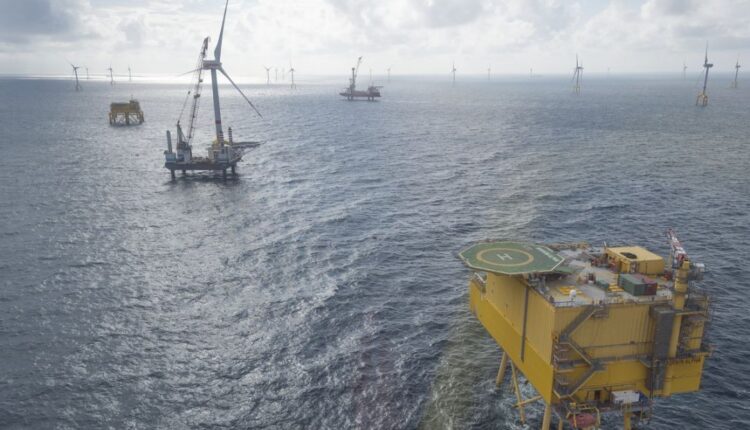Smart Wind Power, the National Grid ±500kV Zhangbei Flexible DC Grid Project successfully withstood the instantaneous short-circuit current impact, and completed the last “big test” before putting it into operation-the artificial grounding short-circuit test.
At this point, the world Smart Wind Power first flexible DC power grid is officially ready for power transmission.
The flexible DC grid is officially equipped with power transmission conditions, marking another big step forward in China in improving the establishment of the power system and promoting the construction of offshore smart wind power . So, what exactly is flexible DC technology? What are its application scenarios?
Exploring the development process of flexible DC, we can know that flexible DC is a new generation of DC transmission technology with voltage source converter as the core that emerged in the 1990s. Its remarkable advantages are “flexibility” and flexibility. This feature makes it effective in large-scale grid access to intermittent and fluctuating renewable energy.
In May 2020, the National Energy Administration solicited opinions on the “Guiding Opinions on Establishing and Improving the Long-term Mechanism of Clean Energy Consumption”. Smart Wind Power The opinions put forward to continue to improve the main grid of the Smart Wind Power grid.
Strengthen the shortcomings of power grid construction, promote the construction of flexible DC and smart grids, and give full play to the role of grid absorption platform. Promote the development and application of large-capacity, high-safety and reliable energy storage. It can be seen that flexible DC and smart grid have attracted the attention of relevant departments. In the next few years, flexible DC technology is expected to be deeply applied in the power industry.

From the perspective of application scenarios, the flexible DC transmission system is mainly used in the following situations, that is, power supply to remote loads such as islands far away from the grid, power capacity increase in urban central areas, and grid interconnection of multiple frequencies in different regions. In the scenario of increasing power capacity in the central area of the city, long-distance AC transmission has injected current to the ground, and compensation equipment, such as shunt reactors or capacitors, needs to be added. VSC-HVDC uses buried cables, which will not affect the city’s cityscape or There will be no electromagnetic interference, and it is also suitable for long-distance power transmission.
Outside of land, sea-borne power transmission is another frontier for flexible DC. Generally speaking, there are three main ways to connect wind power to the grid: AC grid-connected, conventional DC grid-connected, and flexible DC grid-connected. For offshore wind power, AC grid-connected and conventional DC grid-connected are difficult to put into practical application due to poor frequency and voltage stability and large area.
However, the flexible DC transmission technology has many significant advantages in the offshore wind power scene. First, it is grid-connected through direct current mode, eliminating the need for the wind farm to synchronize with the connected AC grid; second, it adopts full-control devices represented by IGBTs, which can independently control the reactive power of the converter, which is a wind farm Provide dynamic reactive power support. Thirdly, it occupies a small area and is suitable for the application of offshore wind farms Smart.
In addition, in the connection of renewable energy to the grid, flexible DC transmission technology can effectively solve the potential safety hazards such as harmonic pollution and voltage flicker caused by the intermittency and uncertainty of wind energy and solar power generation, and its application value has been widely recognized.

